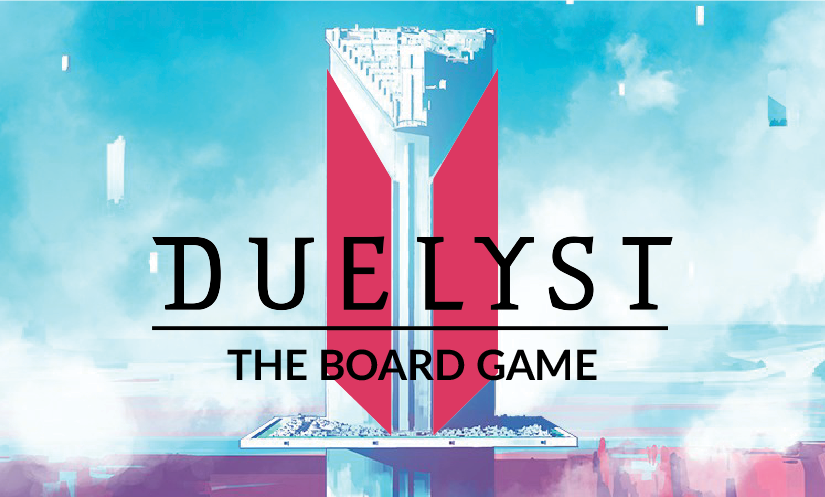Hello fellow duelysts, it’s Anjo! This devlog is about my design and development process for Duelyst II: The Board Game. Hopefully you find it interesting!
Table of contents:
Motivation
Duelyst, as the best collectible card game, was always an inspiration to me. My first card game, Zenyth, took inspiration from Duelyst‘s name and Generals, as you can see below.


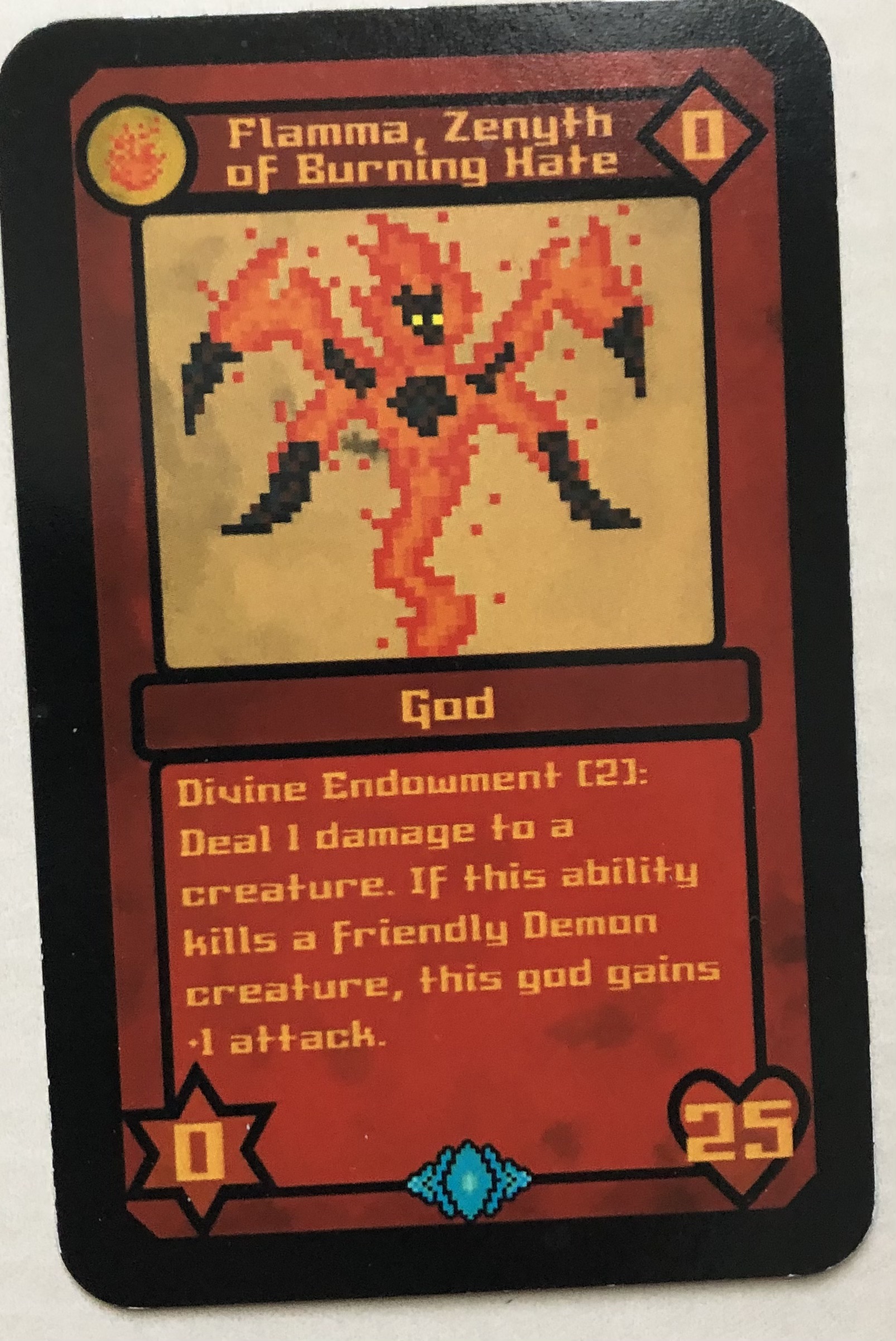
For my second card game, Lesser Evil, the first card I designed, Rogue Knight, was inspired by the Duelyst card Capricious Marauder. I also abused the fact that there were no moderators on the Duelyst Forums to run a Lesser Evil card design contest there, and I added the winning card, Collagist’s Scissors, to the game.
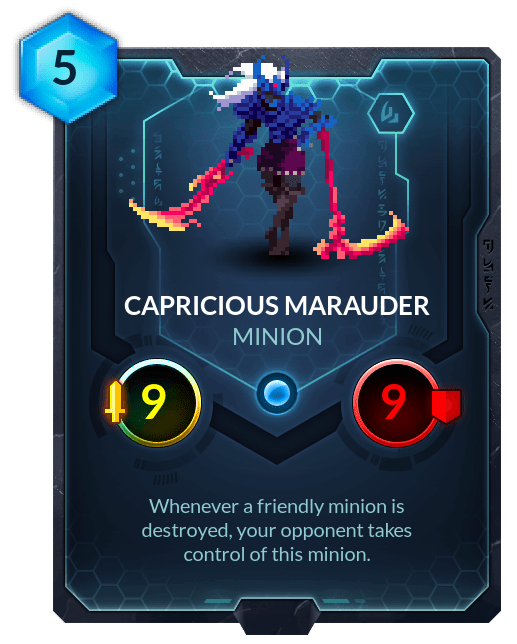
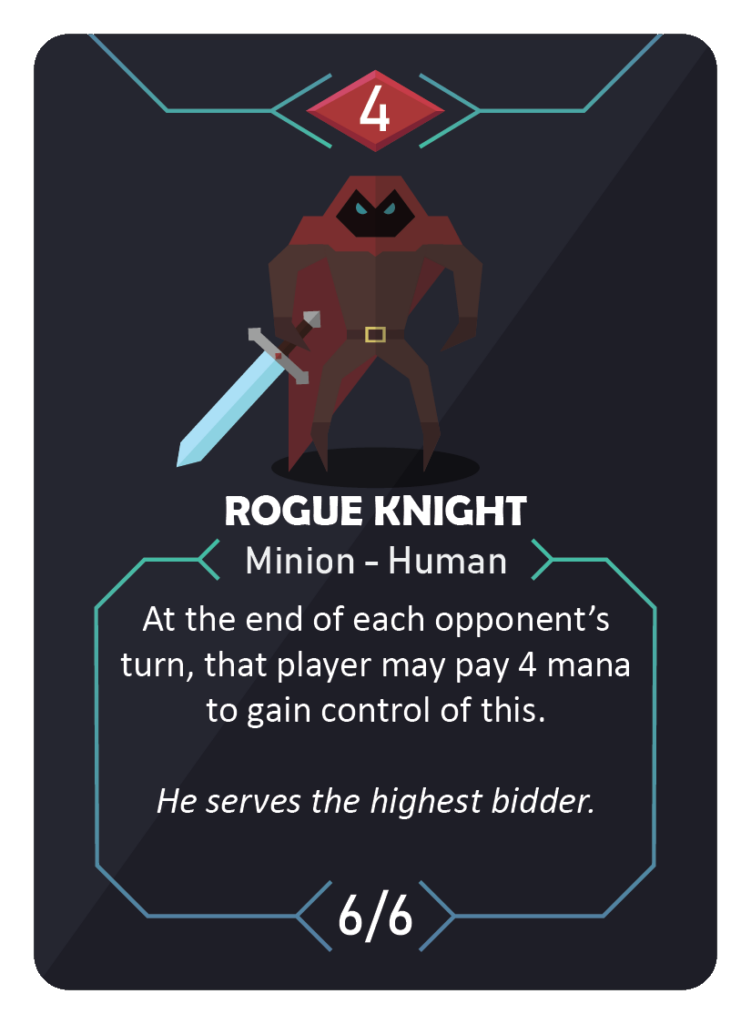

I had heard about some community members creating physical versions of Duelyst around the time that the game servers were shut down. After working on Duelyst II AI for my theses, I was ready to take a break from the digital realm and make another physical card game. I thought it would be fun to come full circle and create Duelyst II: The Board Game.
A couple of my Lesser Evil cards inspired new Duelyst II: The Board Game cards.

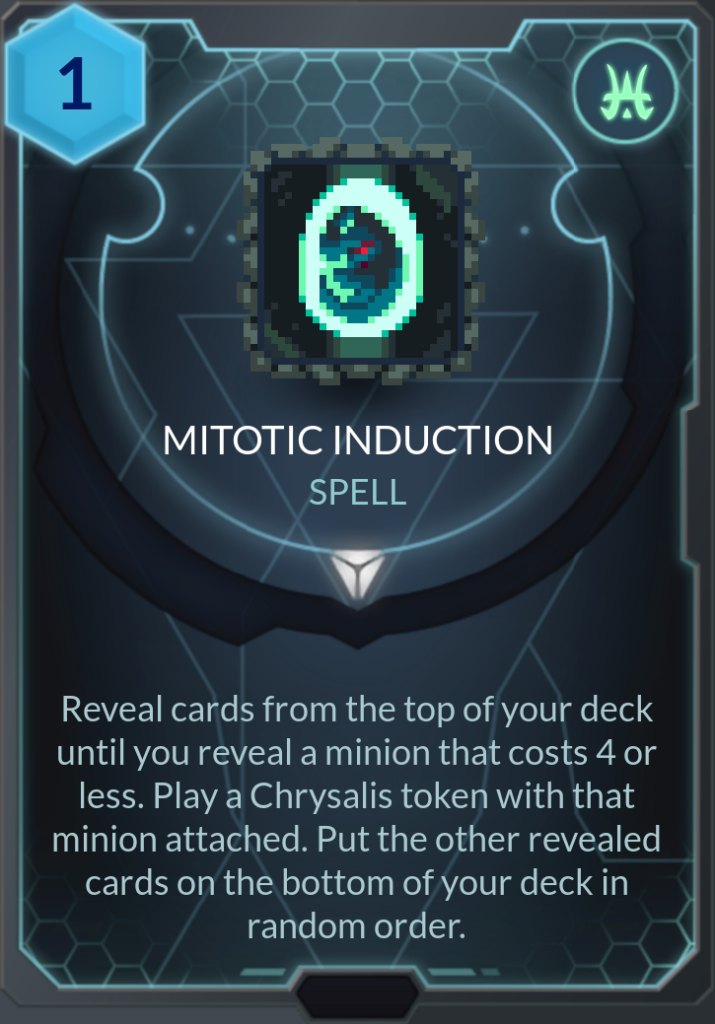

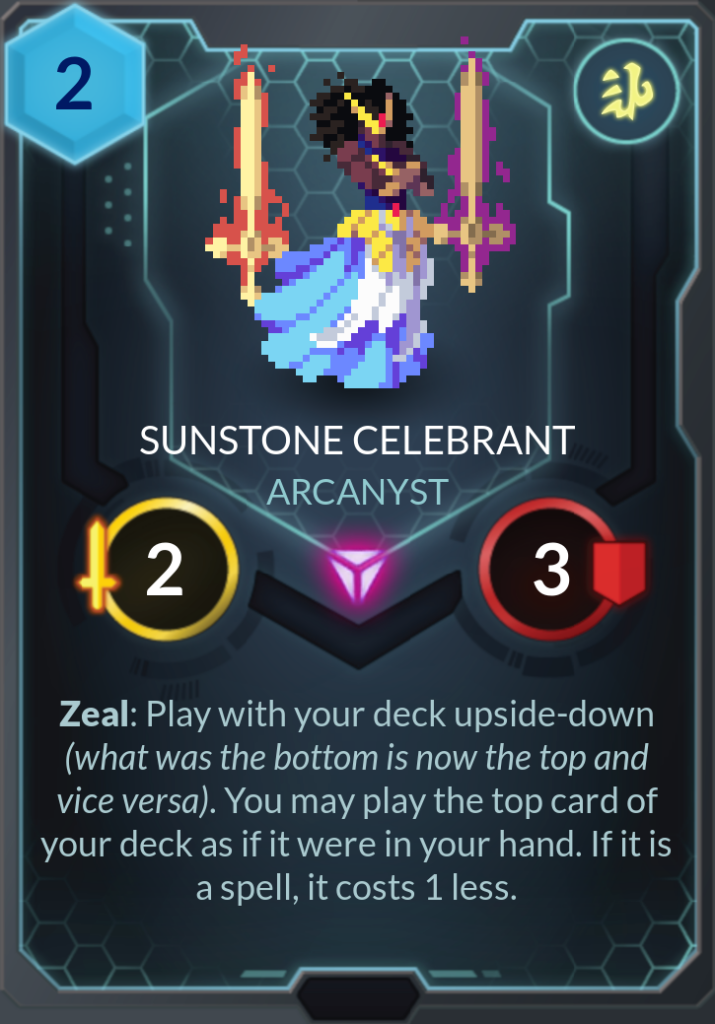
Design
I knew that I would be publishing with The Game Crafter (TGC), since it is a convenient print-on-demand service that I was already familiar with, so I kept that in mind when considering what I could include in the game. I also knew from the start that I wanted a four-player mode in the game and that some cards would have to be rewritten or reworked as a result. Here are some of the biggest design challenges I faced.
Card and Board Size
My biggest decision was how to represent units on the board. They could have been chipboard tokens with pictures of units on them, and you would play cards outside of the board as references. This would’ve allowed for a smaller board, but had the downsides of needing to include tons of tokens and having the players sift through them to find the right minions. Another possibility was generic numbered tokens, which you would place on a unit card outside the board and on the board. This would reduce the number of tokens and sifting, but also abstract the game so much that it might be confusing and also would not look very nice. The most intuitive way to play is to play your minion cards directly onto the board, so that’s what I went with.
I could’ve gone with small cards or square cards to reduce board size, but I thought that part of the experience of playing Duelyst IRL would be regular poker/Magic-sized cards. Plus, I wanted foil cards, and through TGC you can only make foil poker or tarot cards. This decision meant that the board had to be large. TGC did not have a mat large enough, but I found that two 18×18 boards put together worked perfectly, along with two 18×9 boards to extend the board for three or four players. Since the two-player board is made of two boards, I decided to add the Lightning game mode which only uses one board (a 5×5 grid).
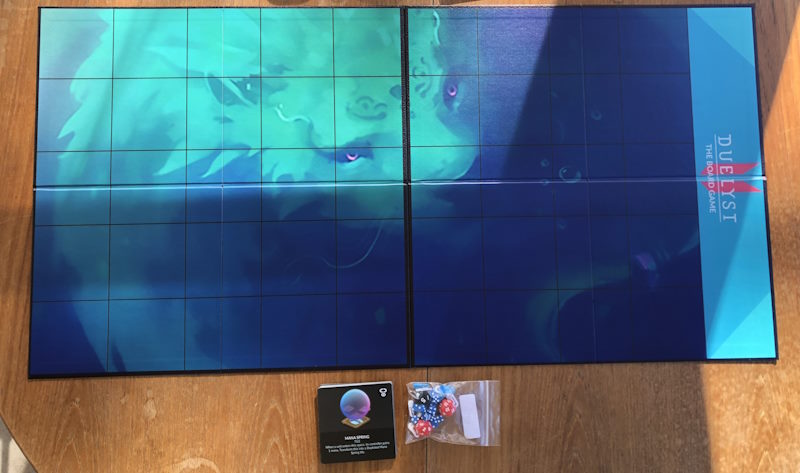

Card Control and Orientation
At first, I was debating whether to have all cards face the same way (as in the video game), or in different directions based on their controller. It might have looked better in two-player to play all cards the same way, but then both players would have to sit on the same side of the board, or one would have to play cards upside-down. And to keep track of card control, some sort of colored tokens would have to be placed on the cards. For four-player mode, the most logical option was that each player would sit at the end of the board where their General starts. Forcing players to play cards sideways or upside-down felt weird, so instead the cards face in different directions. This is the most natural way to play and automatically tracks who controls the card. This means that even in two-player mode, players sit at their ends of the board. For this reason, the definitions of “row” and “column” are reversed from the video game; they are actually relative to each player. “In front” and “behind” are also relative to a card’s orientation, so it is possible for a unit to be in position to backstab three different nearby enemies if they are controlled by different opponents.
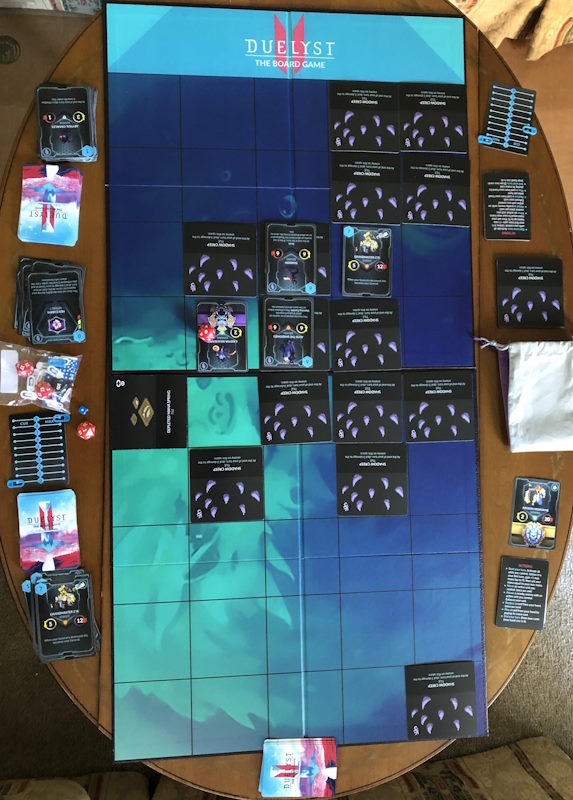

Random Events
Originally, I was thinking up complex ways to represent all the kinds of randomness in Duelyst II in a board game. For instance, summoning a minion on a random space could be done by rolling a ten-sided die (d10) for the row (reroll on 10) and a d6 for the column (reroll on 6). However, adding additional sections to the board for four-player makes things a lot more complicated. I decided instead to simply redesign or not include cards that would make players have to jump through hoops to determine a random outcome. Gateway still works the same as in the video game because you can roll a d8 to choose a nearby space and reroll if necessary, but the new Oracle of the Sands card lets you choose where to play your Wind Dervishes. I redesigned Glacial Elemental and White Widow so that their abilities work similarly to in the video game.


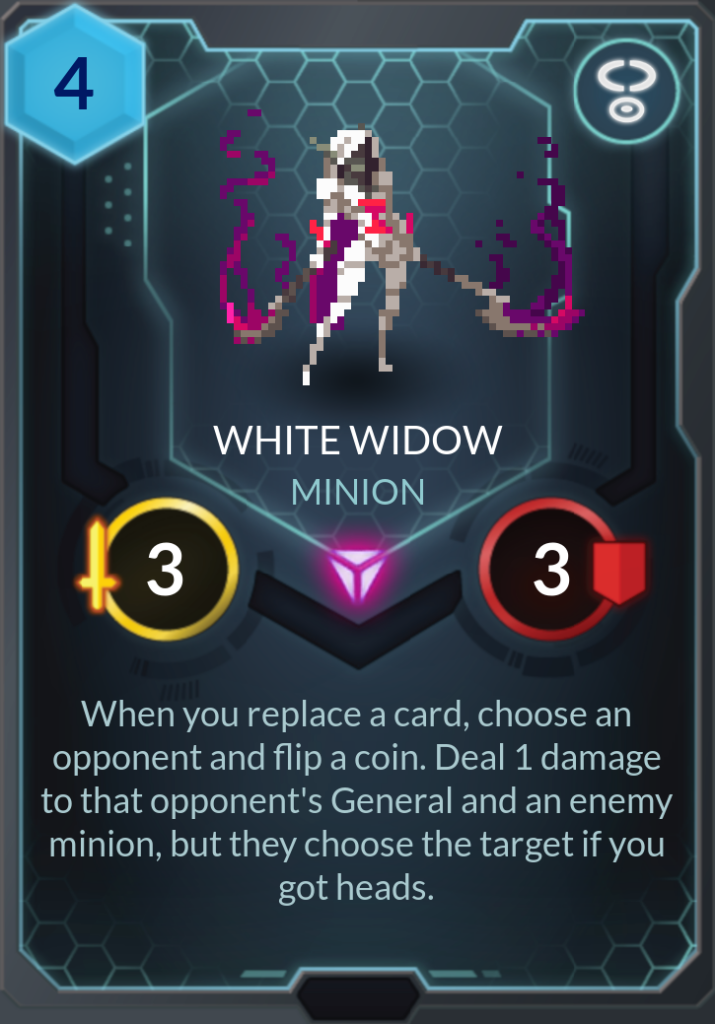
Tracking Stats
At first, I thought mana crystals would be individual chipboard hex tiles that you take more of over the course of the game and flip over to show when they are spent. It was kind of cool to actually “gain a mana crystal” but it was also annoying to have to flip over a bunch of tokens every turn. So I copied my strategy from Lesser Evil, which is to have a mana card which you can attach slider clips to either side of to track current and max mana. I also added a durability counter to artifacts which you can attach a slider clip to. For units, modified Attack and Health are tracked using dice. For this reason, I reduced General Health from 25 to 20, so that you can use a d20 for your General’s Health, and I also changed some cards, such as Portal Guardian and Onyx Jaguar, to give temporary instead of permanent buffs in order to reduce the number of dice needed.
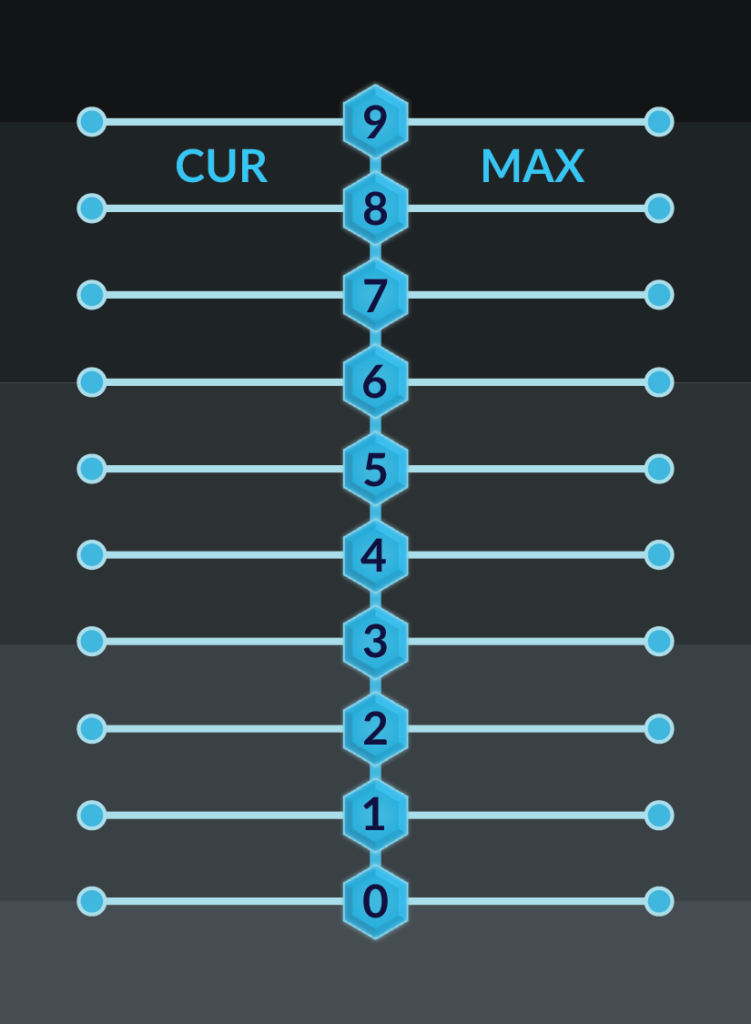



Mulligan and Replace
Mulligan was fine in its original form for the board game, but my friend suggested a new mulligan which is a little simpler and also leads to slightly more consistent starting hands: draw six cards, then shuffle three back into your deck.
I wanted the Lyonar deck to be a replace deck, but replace was a problematic mechanic because shuffling the deck is slow and not something that you want to be happening every turn. I decided to rework replace so that instead of shuffling the replaced card into your deck, you put it on the bottom of your deck. This makes replacing a weightier decision, since you might never see the replaced card again, and it also allows for some shenanigans with Sunstone Celebrant (pictured above).
Infiltrate
With four-player games and games on a smaller board, Infiltrate in its video game form would have been a confusing mechanic. Inspired by chess, I reworked Infiltrate to be a one-time trigger when the unit first enters an opponent’s end zone. The size of the end zone varies across game modes to ensure an equal distance to the nearest opponent’s end zone from your end zone, but it is always smaller than “the opponent’s side of the board” (4 columns) in the video game. This and the fact that Infiltrate is no longer passive allows Infiltrate abilities to be a little more… impressive.

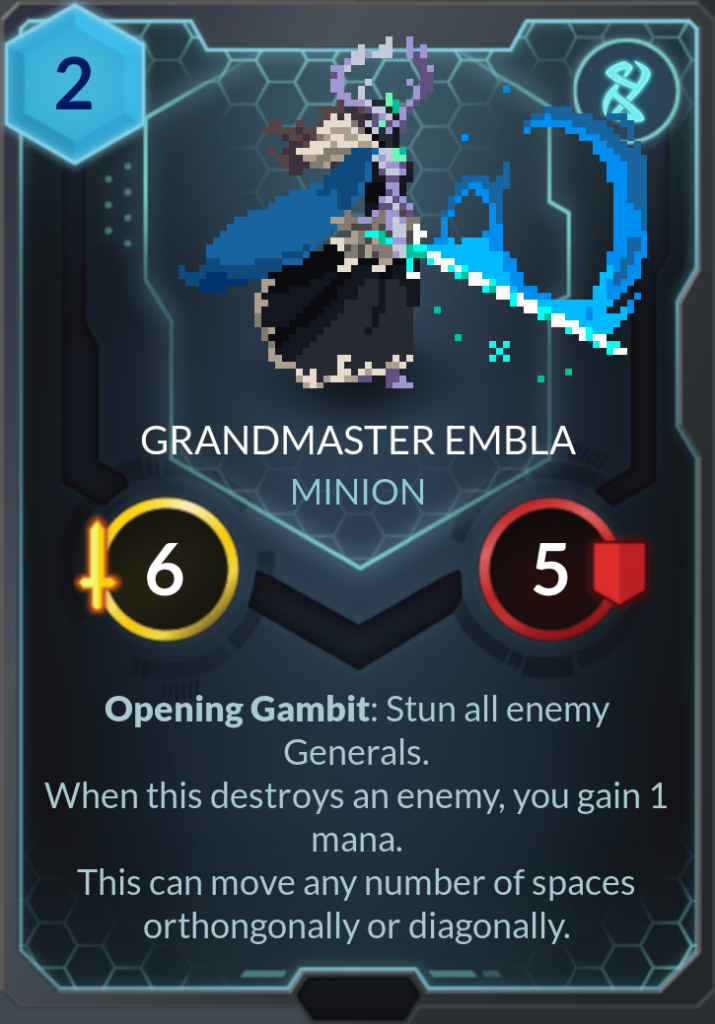
Development Tools
Most of the assets for this game I assembled in Adobe Illustrator. The exceptions are the card images and the rulebook.
Making the Cards
I knew from the start that I wanted an automated process to generate card images. For Zenyth, I made a rudimentary card generator where I would have to type in all of the fields for an individual card and then I could save it as a PNG. For Lesser Evil, each card was a separate Illustrator file. Neither of these methods were any good. If I wanted to change the background for all cards, for instance, I would have to manually regenerate or edit every card. For Duelyst II: The Board Game, I wanted a more efficient process that would also automate creating low-ink printable versions of the cards for me to playtest with. Here is what I came up with.
I define the cards in a Google Sheets spreadsheet.

There’s another tab of the spreadsheet which shows me decklists and stats so that I can better envision what the decks are looking like. All of the information you see below is generated from six calls (one for each deck) of my custom function calcDeckInfo, which is defined in Apps Script (found under Extensions). Apps Script is JavaScript that works with Google stuff.

I save the cards spreadsheet as a CSV. This is used as the input of my card generator program, which is implemented in the Godot game engine using C#. The program also requires a folder with art for the cards and a fillable form PDF of a printable card. I made the latter using Illustrator and Adobe Acrobat Pro.

In the game engine, I defined how a card looks.
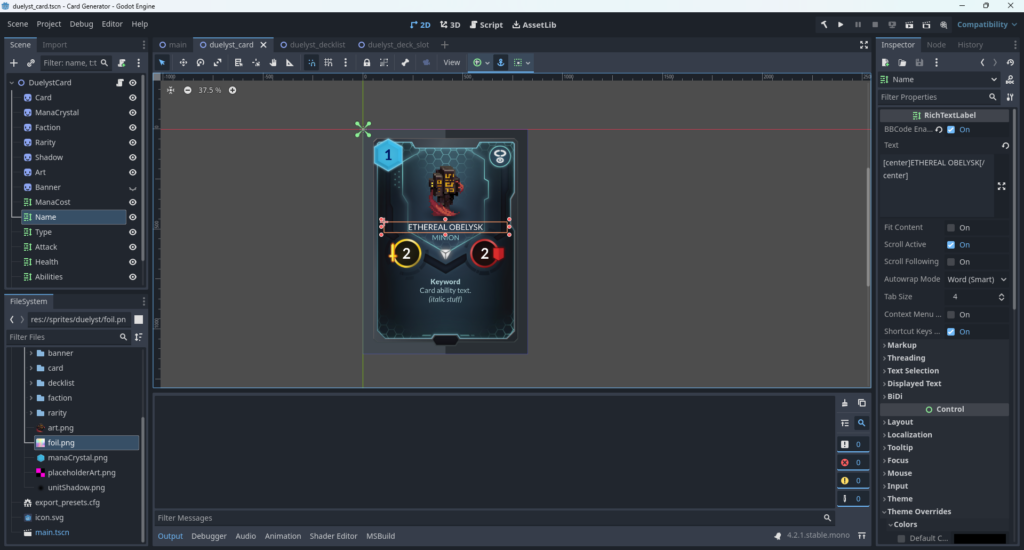
I also have various settings for what kind of output should be generated.

When I run the program, it displays each card in turn and saves it as a PNG.
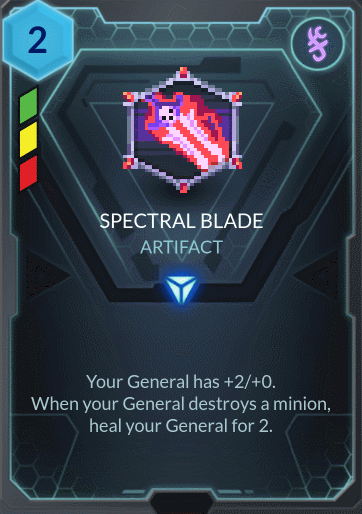
It can also produce low-ink deck PDFs, which are included in the print-and-play version of the game and which I used for playtesting.
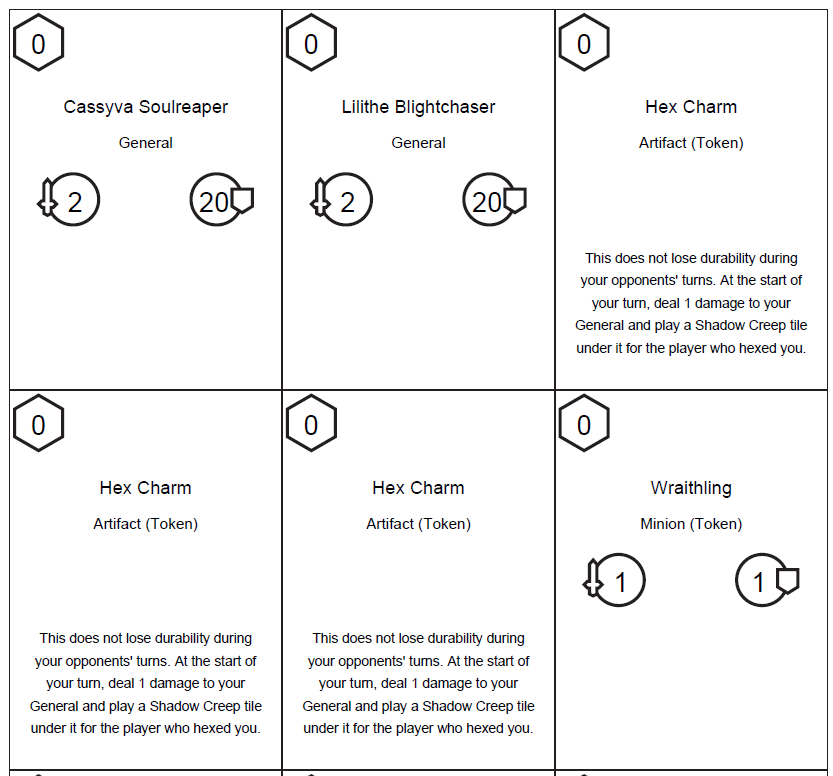
This program makes it easy to iterate on cards and decks. The Game Crafter provides a similar service called Component Studio, but it’s a subscription service and it does not provide a way to make low-ink printable cards. Plus, it was fun to make my own tool. Except for the PDF generation part… that was incredibly painful.
Making the Rulebook
For the rulebook, I used Overleaf, an online LaTeX editor. LaTeX is a kind of markup language for creating and formatting documents. It is very useful for research papers, and apparently also for rulebooks. By changing one variable, I can switch the output between the nice version of the rulebook (shown below on the right) and the low-ink printable version.

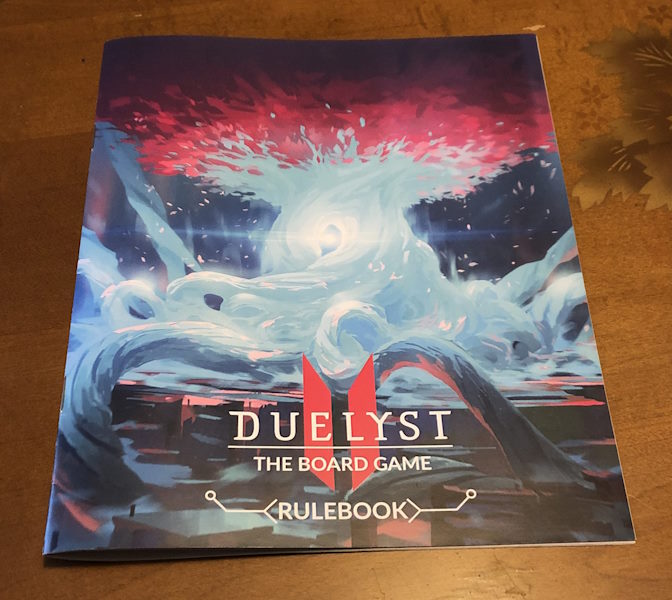

What’s Next?
What is the future for Duelyst II: The Board Game? There’s been a lot of positive response so far, and if there’s enough interest I’d be happy to create new decks and “deck expansions” (18-card non-random packs of cards to add or swap in to existing decks) in the future. I added the new Panddo, Demon, and Knight tribes for a reason, and I would love to see Mechaz0r in the board game as well. Feel free to reach out on Discord and tell me what archetypes/cards you’d like to see in physical form!
Acknowledgments
Thank you to the Duelyst and Duelyst II designers and artists whose great work I was able to use and build off of for this game. Also thank you to my friend, my brother, and my girlfriend who helped me with playtesting and gave me some great ideas.

